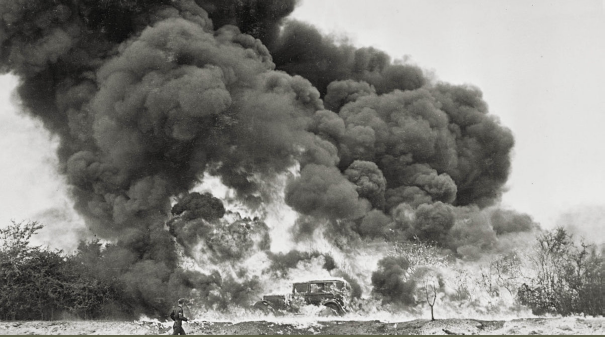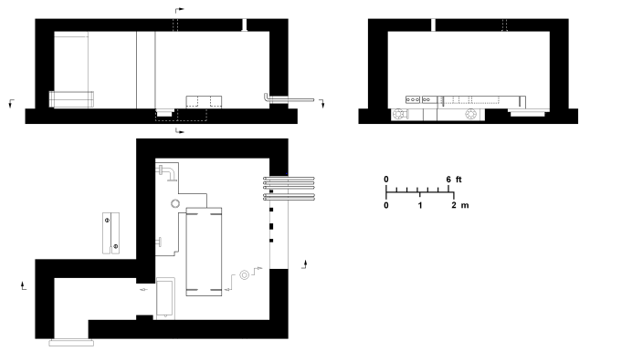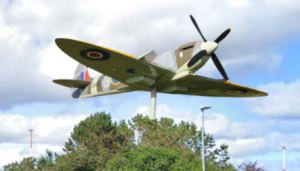Site 5. Wester Flame Barrage
The Petroleum Warfare Department (PWD) was established in 1940 in response to the invasion crisis when it appeared that Germany would invade this country. The department was tasked with developing the use of petroleum as a weapon of war and oversaw the introduction of a range of flame weapons.
One of these was the ‘Beach Flame Barrage’ which was a particularly horrifying weapon. It was designed to spray a burning mixture of petroleum and fuel oil with the intention of setting the beach on fire as invading forces came ashore.

The only barrage constructed in Scotland was at Wester River in Sinclair’s Bay, and was one of only 6 ever built.


The weapon consisted of a line of jets, metal pipes with flattened fishtail ends, projecting from the sand just above the high water mark. These were fed from buried feeder pipes leading back to a pump and fuel reservoir. The fuel for the barrage was a mixture of 25% petroleum and 75% heavy fuel oil. It was stored in 12,000 gallon (54,000 litre) storage tanks and pumped by modified fire pumps to supply the nozzles.
The barrage at Wester covered a front of about 600 yards (550m) across the mouth of the river, creating a belt of fire to a depth of 15 to 25 feet (4.5 to 7.5m). The fuel tanks were buried in the dunes to the rear of the barrage and had the capacity to keep the jets in continuous operation for up to an hour. The fuel was ignited either by a Flame Fougasse which was an explosive device to ignite flammable liquids, or an electrical ignition system.

The six storage tanks have now been removed with the last one going in the early 1980s. The small bunker which housed the pumps is buried nearby in the dunes, where the mounting plinth for the pumps and some of the pipework can still be seen.
There were also two small two-man Observation Posts (OP) placed on either side of the river mouth. It is thought that these were the control posts for the barrage. It is believed they would have been manned by an observer and a signaller who were in communication with the pump room using a field telephone. The observer, watching the enemy’s approach, would judge the correct moment to give the order to fire the barrage. The signaller would then relay the order to the pump room. To gain maximum effect this would be 30 seconds before the leading troops came within range of the barrage as it took this length of time to start the pumps and ignite the oil.


